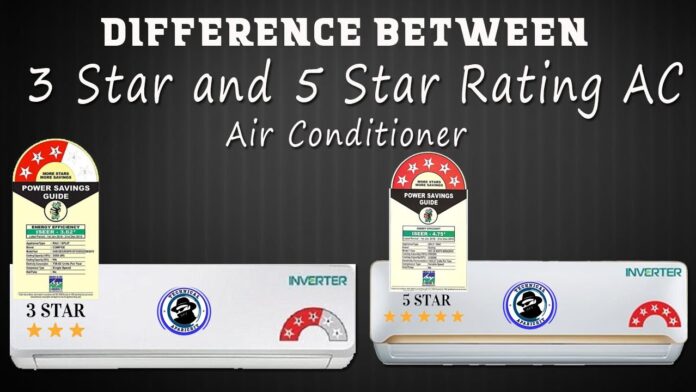When purchasing appliances, it’s essential to consider their energy efficiency and environmental impact. In the case of air conditioners, you may have come across terms like “3-star” and “5-star” ratings. But what do these ratings really mean, and how do they affect your buying decision? In this article, we will explore the differences between 3-star and 5-star AC ratings, shedding light on their energy efficiency, cost-effectiveness, and environmental implications.
Energy Efficiency Matters
- 3-Star Air Conditioners: A 3-star AC rating indicates good energy efficiency. These units consume moderate amounts of electricity while providing satisfactory cooling performance. They strike a balance between affordability and efficiency, making them suitable for those who want a cost-effective option without compromising on cooling comfort.
- 5-Star Air Conditioners: On the other hand, a 5-star AC rating represents excellent energy efficiency. These units consume significantly less electricity compared to their 3-star counterparts while delivering top-notch cooling performance. Although 5-star ACs may have a higher upfront cost, they save substantial amounts of energy in the long run, translating into lower electricity bills.
Cost-Effectiveness and Savings
Also Read: AC Service in Chandigarh: Find the Best AC Repair and Installation Services
- 3-Star Air Conditioners: While 3-star ACs offer decent energy efficiency, they are generally more affordable upfront. If you’re on a budget or don’t plan on using the AC extensively, a 3-star rating can be a cost-effective choice. However, it’s important to consider the long-term operational costs, as they may be higher due to slightly higher energy consumption.
- 5-Star Air Conditioners: Investing in a 5-star AC may require a higher initial investment, but it can lead to significant savings in the long term. The energy-saving capabilities of these units result in lower electricity bills, offsetting the higher upfront cost over time. If you plan to use the air conditioner frequently or live in a region with hot summers, a 5-star AC can be a financially wise decision.
Environmental Impact
- 3-Star Air Conditioners: While 3-star ACs offer moderate energy efficiency, they still consume more electricity compared to 5-star units. This higher energy consumption contributes to a greater environmental impact, including increased greenhouse gas emissions. However, 3-star ACs are relatively more environmentally friendly than lower-rated models and older ACs.
- 5-Star Air Conditioners: 5-star ACs shine when it comes to environmental friendliness. Their significantly reduced energy consumption leads to lower carbon emissions, making them an eco-conscious choice. By opting for a 5-star AC, you contribute to the reduction of greenhouse gas emissions and support sustainable living practices.
Conclusion
Also Read: Best Split AC Under 25000 In 2023: Enjoy Efficient Cooling On A Budget
Understanding the difference between 3-star and 5-star air conditioner ratings is crucial when making an informed purchasing decision. While both options provide cooling comfort, there are notable distinctions in terms of energy efficiency, cost-effectiveness, and environmental impact.
If you prioritize energy savings and environmental sustainability, a 5-star AC is the way to go. Although it may have a higher upfront cost, the long-term financial savings and reduced carbon footprint make it a worthwhile investment. On the other hand, if budget constraints are a primary concern and you don’t require extensive cooling usage, a 3-star AC can provide satisfactory efficiency while being more affordable initially.
Evaluate your cooling needs, consider your budget, and factor in long-term energy savings and environmental impact to determine the ideal choice between a 3-star and 5-star air conditioner. Make a decision that aligns with your priorities and enjoy a cool and eco-friendly living space.





